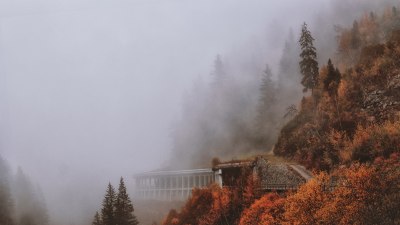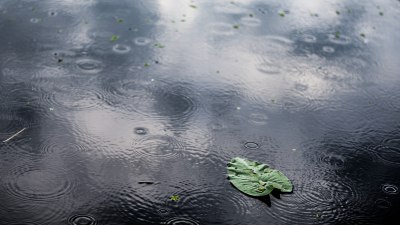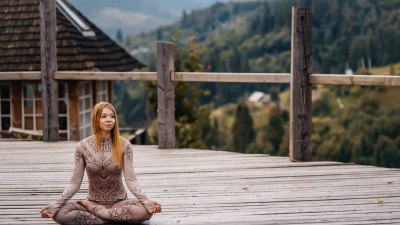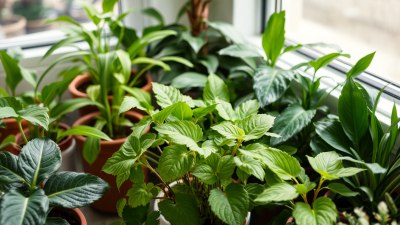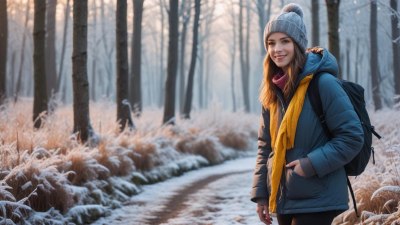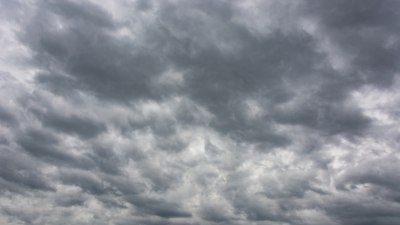How Winter Turns Everyone Into Human Space Heaters
Explore how winter transforms our bodies into natural space heaters and the science behind staying warm in cold seasons.

As winter arrives, temperatures plunge, turning our world into a chilly environment that demands warmth and comfort. This seasonal shift triggers a fascinating physiological transformation in humans, effectively turning us into human space heaters. Understanding how our bodies regulate heat during cold weather reveals the remarkable ways we adapt to survive and stay comfortable.
At the core of this transformation is the body's intricate thermoregulation system, designed to maintain an optimal internal temperature, typically around 98.6°F (37°C). When cold air envelops us, our bodies activate a series of mechanisms to preserve heat and generate more if necessary. These processes ensure vital organs function correctly while also providing an external warmth that helps us endure the cold.
Shivering: The Body’s Internal Furnace
One of the most noticeable responses to cold is shivering - an involuntary muscle activity that generates heat. When exposed to low temperatures, the brain’s hypothalamus detects a drop in core body temperature and sends signals to muscles, causing them to rapidly contract and relax. This constant, small-scale movement produces heat through increased metabolic activity, serving as an internal furnace that boosts warmth without requiring conscious effort.
Shivering is effective but energy-intensive. It can significantly increase caloric consumption as the muscles burn fuel to maintain this heat production. Although it’s a short-term solution, it plays a crucial role in helping humans survive sudden drops in temperature, especially when external heat sources are unavailable.
Vasoconstriction: Conserving Heat by Restricting Blood Flow
Another key strategy the body employs in cold weather is vasoconstriction, a process where blood vessels near the skin surface narrow. By restricting blood flow to extremities such as fingers, toes, ears, and the nose, the body minimizes heat loss through the skin, directing warm blood towards the core and vital organs instead. This preservation of core heat is essential for maintaining organ function and overall survival.
However, vasoconstriction comes at a cost. Reduced blood flow to extremities can cause them to become cold and numb, increasing the risk of frostbite in extreme conditions. This trade-off shows how the body prioritizes the heating of essential areas over the peripheral ones during persistent cold exposure.
Non-Shivering Thermogenesis: Activating Brown Fat
Beyond shivering, the body has another fascinating heat-generating adaptation known as non-shivering thermogenesis. This mechanism involves brown adipose tissue (BAT), or brown fat, which is specialized in producing heat by burning calories. Unlike the more common white fat, which stores energy, brown fat contains numerous mitochondria filled with iron, giving it its characteristic darker color and enabling it to burn fuel efficiently.
When cold, the sympathetic nervous system stimulates brown fat cells to break down fat molecules, releasing heat instead of storing energy. This process helps elevate body temperature without muscle contractions, making brown fat a vital contributor to maintaining warmth in cold climates. Interestingly, babies and hibernating animals have higher amounts of brown fat, but adults retain some, especially in areas like the neck and shoulders.
Behavioral Adaptations to Enhance the Human Heater Effect
While physiological responses are powerful, humans also rely heavily on behavior to manage cold temperatures. Wearing layered clothing, utilizing insulation, and seeking shelter are classic ways we enhance our natural heat retention. But even beyond clothing, certain behaviors subtly boost our internal heating capabilities.
For instance, when cold, people often reduce movement to minimize heat loss from sweating while simultaneously adopting postures that conserve heat—such as crossing arms or huddling. Social behaviors like gathering close together in groups help share warmth, amplifying the human space heater effect collectively.
Metabolic Changes: Fueling the Internal Heat Engine
Winter also triggers metabolic changes. The body increases its basal metabolic rate to generate extra heat, requiring a greater intake of calories and nutrients to sustain the process. Foods rich in carbohydrates and fats become especially important as energy sources during cold periods.
This metabolic shift explains why people often feel hungrier in colder months. The body demands more fuel to burn and generate heat, turning food consumption into a key element of the winter warming process. In some cultures, traditional winter diets are rich in hearty, calorie-dense meals designed to support this need.
The Role of Hormones in Cold Adaptation
Hormonal changes also play a part in adjusting to winter's chill. Thyroid hormones, for example, increase metabolic activity, enhancing heat production throughout the body. Elevated levels of adrenaline and noradrenaline, released by the adrenal glands in response to cold stress, stimulate brown fat activity and lipolysis—breaking down fats to provide fuel for thermogenesis.
Cortisol, the stress hormone, can also rise during cold exposure, modulating energy availability and influencing how the body copes with thermal stress. These hormonal shifts orchestrate a sophisticated response, fine-tuning the body’s heating mechanisms at a chemical level.
Insulation Provided by Body Fat and Hair
Body composition influences how efficiently someone can retain heat during winter. Subcutaneous fat acts as a natural insulator, slowing heat loss by creating a barrier between the skin and cold environment. Individuals with higher body fat percentages often find it easier to endure cold temperatures due to this protective effect.
Human hair, although thinner and less dense compared to many mammals, still provides some insulation. Hair traps a thin layer of air close to the skin, which warms up from body heat and forms a buffer against the cold. This is why expressions like “hair standing on end” don't just indicate fear but originally signified an attempt to increase this insulating air layer in colder conditions.
The Psychological Impact of Being a Human Space Heater
Winter’s demand to serve as our own heaters affects our psychological state, influencing mood and behavior. The discomfort of cold can trigger a heightened awareness of the need to seek warmth, which motivates behaviors such as increased physical activity or remaining close to heat sources.
Seasonal Affective Disorder (SAD), linked to reduced sunlight in winter, underscores the complex interplay between environment, physiology, and emotions during colder months. Giving the body adequate warmth—both physically and psychologically—helps mitigate these effects, improving overall well-being.
Modern Technology and How It Augments Our Natural Heating
In contemporary society, technology has greatly enhanced our ability to stay warm. Heating systems in homes, cars, and workplaces reduce the strain on our bodies to generate heat internally. Electric blankets, heated clothing, and other wearable devices supplement natural thermogenic processes, making winter more comfortable.
However, over-reliance on artificial heat can dampen the body’s own adaptive responses. For example, constant warmth may reduce brown fat activity since the body doesn't need to produce heat intrinsically. Balancing external heating with natural physiological adaptations is essential for maintaining robust cold resistance.
Winter Sports and Physical Activity: Using Movement to Warm Up
Many people use winter as an opportunity for physical activities such as skiing, ice skating, and snowshoeing. Exercise increases muscle activity and circulation, naturally boosting body temperature and providing warmth. Staying active during cold months enhances the effectiveness of the human internal heating system and supports cardiovascular health, which helps regulate body temperature more efficiently.
Additionally, regular exposure to cold combined with physical activity can improve cold tolerance over time, conditioning the body to respond faster and more effectively to chilly environments.
Vulnerable Populations and Challenges in Cold Weather
Despite our body's impressive heating abilities, some populations face greater challenges in winter. Elderly individuals, infants, and those with certain health conditions may have impaired thermoregulation, making them more susceptible to hypothermia and cold-related illnesses.
For these groups, external warmth through clothing and environmental controls is critical. Understanding how winter affects human physiology helps caregivers and communities implement better protections and warnings during cold spells, potentially saving lives.
The Global Perspective: Adaptations Across Cultures
Different cultures have evolved unique ways to manage cold, complementing human physiology with specific clothing styles, housing designs, and dietary traditions. For instance, Arctic dwellers wear layered, insulated garments made from animal furs that trap heat effectively, while traditional diets emphasize high-fat, energy-rich foods to fuel thermogenesis.
In contrast, temperate regions emphasize seasonal clothing changes and architectural insulation to maintain warmth indoors. These cultural adaptations highlight the synergy between environment, biology, and human innovation in surviving and thriving during winter.
Climate Change and Its Impact on Human Thermoregulation
As global temperatures fluctuate, the predictability of seasonal cold weather may shift, impacting how humans prepare and respond to winter's demands. Warmer winters may lead to reduced brown fat activity and altered metabolic rates, affecting long-term health and energy balance.
Conversely, sudden cold snaps in regions unaccustomed to harsh winters may pose serious risks, as populations there might lack adequate physiological and behavioral adaptations. Understanding the intersection between climate dynamics and human thermoregulation is crucial for future public health planning.
All told, winter transforms each of us into a natural heater through an intricate interplay of muscle activity, fat metabolism, vascular responses, hormonal shifts, and behavioral strategies. This seasonal metamorphosis underscores the remarkable resilience and adaptability of the human body in the face of environmental challenges.
By appreciating these natural heating processes, we can better protect ourselves during cold months, make informed lifestyle choices, and respect the evolutionary heritage that equips us to survive the chill.

